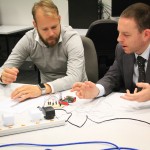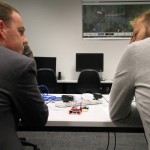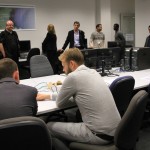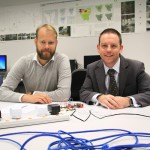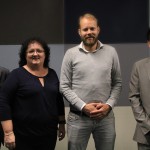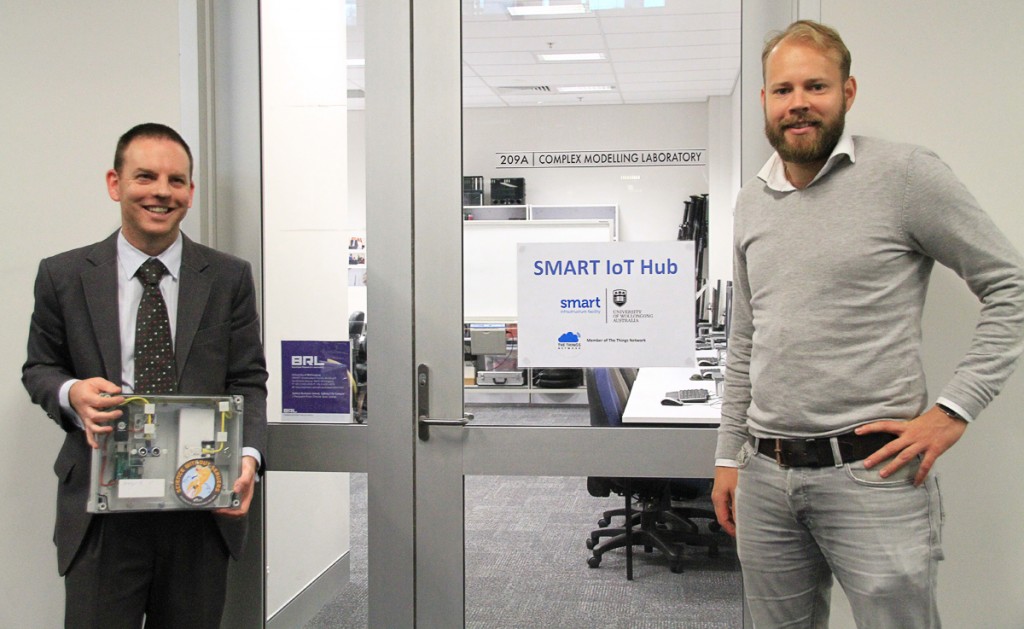
Dr Matthew Berryman, IT Architect, SMART Infrastructure Facility, University of Wollongong (right) together with Mr Wienke Giezeman, Initiator, The Things Network, launched the new Internet of Things (IoT) Laboratory at SMART Infrastructure Facility on Wednesday, 31 August 2016.
As sensors become smaller and cheaper and networks become more expansive and accessible, more and more things are being created with data capabilities.
According to information technology research company Gartner, 6.4 billion things will be connected worldwide by the end of 2016. By 2020, 6.4 billion is expected to become 20.8 billion.
That won’t happen without people, enthusiasts and experts alike, creating and building new things with practical applications.
The SMART Infrastructure Facility (SMART) at the University of Wollongong (UOW) has formed partnerships and taken steps to facilitate growth in the local Internet of Things (IoT) scene: in April 2016, a publicly accessible IoT gateway was installed atop the Sustainable Buildings Research Centre (SBRC) building at UOW’s Innovation Campus; in May, SMART co-hosted a workshop with more than 50 participants which generated dozens of new ideas for how to take advantage of Wollongong’s IoT network.
Most recently, SMART launched an IoT lab where people can learn about and build IoT devices.
Matthew Berryman, an information technology architect at SMART, said the new lab will be used by university students, researchers, and community groups.
“The lab is really a central point where we can have sessions where people can come along and they can do experiments with their own kits that they’re building and we can share knowledge.”
The lab has already hosted students from Dapto High School and the Wollongong unit of the NSW State Emergency Service (SES).
“At the first session we had with the high school students they were there learning about the basics of the hardware of how to plug sensors into a little microcomputer, getting that talking to a WiFi network, and then actually getting some data, being able to visualise that data on a map and then making sense of that data and how they might use that in a school context,” Dr Berryman said.
The SMART IoT Lab was launched on August 31, 2016, in partnership with The Things Network (TTN), a global initiative originating in Amsterdam that’s crowdsourcing IoT networks in cities and regional areas around the world.
The initiative, led by Dutch entrepreneur Wienke Giezeman, who was in Wollongong to present at the International Symposium for Next Generation Infrastructure hosted by SMART, is mobilising enthusiasts and asking them to buy and install a LoRaWan gateway and help create a user-own IoT network.
The Things Network is also bringing its own hardware to market and has raised €295,331 (AU$440,000) via a Kickstarter campaign to do so.
“The Things Network are a really innovative group,” Dr Berryman said. “It’s about community groups being able to have access to these gateway devices which sensors talk to over reasonably long ranges, and it’s all basically free to use.”
Long range is an important feature of the technology used by The Things Network. Known as LoRaWan, the technology is also relatively cheap and low power – it can last approximately three years on a single charge. After becoming acquainted with the technology in 2015, Mr Giezeman began theorising how the technology could be implemented to build a decentralised IoT network. Theory was put into practise soon afterwards and in just six weeks, TTN had managed to create a city-wide IoT network in Amsterdam with just 10 gateways.
The initiative went international quickly: currently, TTN has a presence in 200 cities around the world, including Wollongong, Sydney, Melbourne, Adelaide and Perth.
“Because of its open character, because it’s bottom up, and because it’s very low entry, that’s resulted in a global adoption,” Mr Giezeman said ahead of the Wollongong-based ISNGI conference in September.
“The scalability of it [means] that we’re not needed to make this work. We just provide the platform and everybody can add to it,” he added.
Via its IoT lab, SMART hopes to encourage people in Wollongong to use and contribute to the network.
“We welcome anyone to get involved, you can come along and you learn about the internet of things and how it all works. We have people who come along and we run regular sessions where people can come along and bring in little devices they’ve been working on,” Dr Berryman said.
The SMART IoT Lab will soon also be linked to the IOT Alliance, and will be used to host hacking sessions and support the University’s STEM (Science, Technology, Engineering and Mathematics) outreach program.
More images from the launch:

